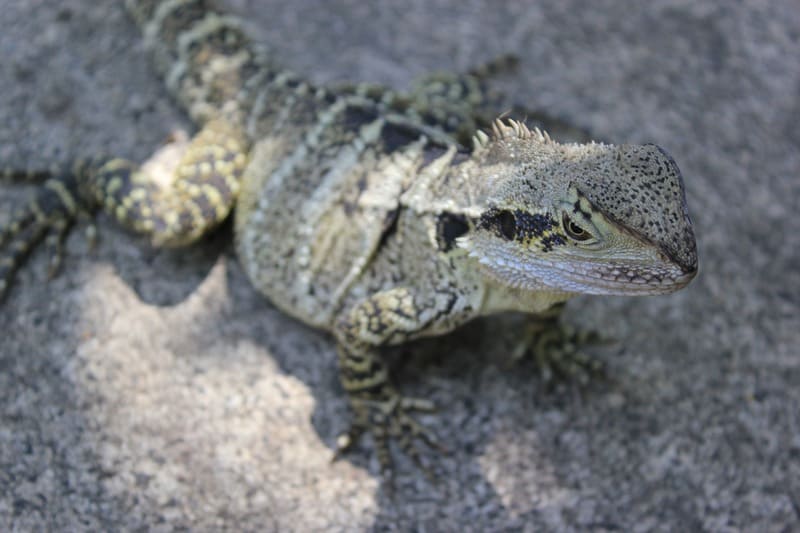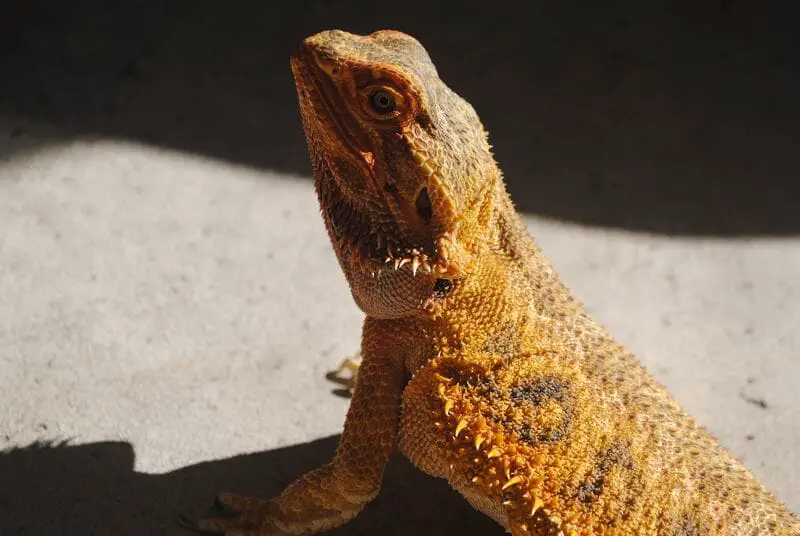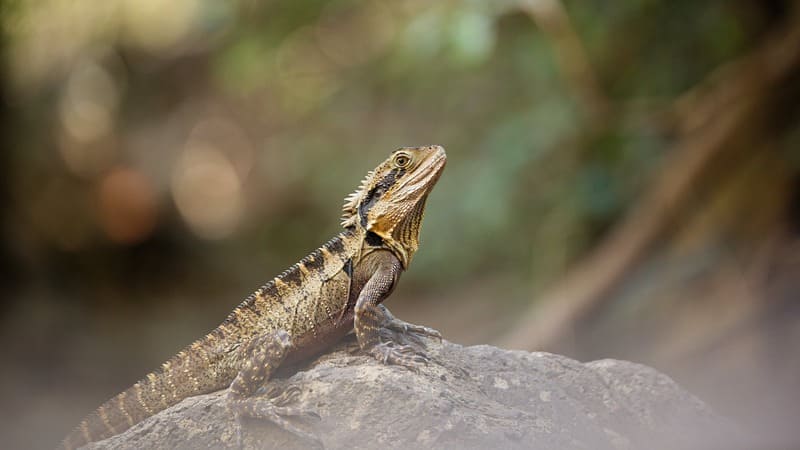Bearded dragons are a fascinating group of reptiles native to Australia. These unique creatures have become increasingly popular as pets, known for their distinctive appearance, gentle temperament, and manageable care requirements. To fully appreciate and understand these remarkable reptiles, it’s essential to explore their origins, natural habitat, and the evolutionary factors that have shaped them over millions of years. In this comprehensive guide, we will take a journey to discover where bearded dragons come from, delving into their native environment, various species, and their evolution as a distinctive reptilian group.

A Glimpse into the World of Bearded Dragons
Bearded dragons belong to the family Agamidae, a diverse group of lizards that includes numerous species adapted to various habitats and lifestyles. Bearded dragons, specifically, are characterized by several unique features that set them apart from other agamids. These features include:
- “Beard”: One of the most distinctive features of bearded dragons is the expandable throat pouch, which they can puff up and darken. This is commonly referred to as the “beard.” They use this display for various purposes, including defense, courtship, and territorial communication.
- Spiky Scales: Bearded dragons have spiky, keeled scales running along their sides and back. These scales give them a rugged appearance and help with thermoregulation.
- Lishe ya Omnivorous: Bearded dragons are omnivores, meaning they consume both animal and plant matter. Their dietary habits include insects, leafy greens, vegetables, and occasional fruits.
- Tabia ya Basking: Bearded dragons are known for their basking behavior. They require access to a heat source to regulate their body temperature effectively.
- Tabia ya kijamii: These reptiles are relatively sociable, and many individuals become accustomed to human interaction, making them popular as pets.
Makazi Asilia ya Dragons Wenye Ndevu
Bearded dragons are indigenous to Australia, where they inhabit a wide range of arid and semi-arid environments. Their native habitat consists of the following key regions:
1. Eastern Bearded Dragon (Pogona Barbata)
The eastern bearded dragon is one of the most widespread species and can be found along the eastern coast of Australia, including parts of Queensland, New South Wales, and Victoria. These regions feature a mix of woodlands, grasslands, and open forests, providing diverse habitats for these reptiles.
2. Western Bearded Dragon (Pogona Minor)
The western bearded dragon primarily inhabits the arid and semi-arid regions of Western Australia, extending into the Northern Territory and South Australia. These reptiles are adapted to harsher, drier environments and have evolved unique characteristics to survive in these regions.
3. Inland Bearded Dragon (Pogona Vitticeps)
The inland bearded dragon is one of the most well-known and widely kept species in the pet trade. It is found in various arid regions of central and southeastern Australia. These regions include desert and scrubland environments, and these dragons have adapted to thrive in conditions of low humidity and extreme temperatures.
4. Dwarf Bearded Dragon (Pogona Minor Minima)
The dwarf bearded dragon is a smaller species found in arid and desert regions of Western Australia. It is one of the smaller species of bearded dragons, adapted to its particular habitat.
5. Nullarbor Bearded Dragon (Pogona Nullarbor)
This species, also known as the Nullarbor dwarf bearded dragon, is found in the arid Nullarbor Plain region in South Australia and Western Australia. The Nullarbor Plain is characterized by vast expanses of flat, arid terrain, making it a challenging environment for these reptiles.
Each of these species has evolved to thrive in its respective habitat, adapting to the specific challenges posed by varying climates, vegetation, and ecological conditions.

Evolution of Bearded Dragons
Bearded dragons have a long evolutionary history that has allowed them to become well-suited to their diverse habitats. These reptiles belong to the family Agamidae, which includes over 300 species. The family Agamidae is part of the larger group of lizards known as Iguania, which also includes iguanas and chameleons.
The evolutionary lineage of bearded dragons can be traced back millions of years. Their unique characteristics, such as the “beard” and spiky scales, have likely developed over time as adaptations to their environment. The expansion of their throat pouch and the display of their “beard” are believed to have evolved as a means of deterring predators and establishing dominance during territorial disputes or courtship.
One remarkable aspect of bearded dragons’ evolution is their ability to tolerate a range of temperatures and conditions. Their capacity to thermoregulate effectively allows them to inhabit both extremely hot and cooler regions in Australia. In harsh, arid environments, where food and water may be scarce, their omnivorous diet and efficient use of available resources have contributed to their survival.
Species of Bearded Dragons
Bearded dragons are not limited to a single species; several distinct species and subspecies have been identified. Each species may exhibit unique characteristics and adaptations based on its native habitat. Some of the notable species of bearded dragons include:
1. Pogona Barbata (Eastern Bearded Dragon)
The eastern bearded dragon, Pogona Barbata, is one of the larger species. It is found in eastern Australia, including Queensland, New South Wales, and Victoria. These dragons display a wide range of colors and patterns, and their habitat includes woodlands, grasslands, and open forests.
2. Pogona Minor (Western Bearded Dragon)
The western bearded dragon, Pogona Minor, is found in the arid and semi-arid regions of Western Australia, extending into the Northern Territory and South Australia. They are smaller in size and have adapted to drier and harsher environments.
3. Pogona Vitticeps (Inland Bearded Dragon)
The inland bearded dragon, Pogona Vitticeps, is one of the most commonly kept species in captivity. It inhabits central and southeastern Australia, where it has adapted to low-humidity environments and extreme temperatures.
4. Pogona Henrylawsoni (Rankin’s Dragon or Dwarf Bearded Dragon)
Rankin’s dragon, also known as the dwarf bearded dragon, is a smaller species found in the arid regions of Western Australia. They have a more limited distribution and are known for their small size and vibrant colors.
5. Pogona Nullarbor (Nullarbor Bearded Dragon)
The Nullarbor bearded dragon, or Nullarbor dwarf bearded dragon, is found in the arid Nullarbor Plain region in South Australia and Western Australia. They are adapted to the challenging environment of the Nullarbor Plain.
These are just a few examples of the diverse species and subspecies of bearded dragons, each with its unique characteristics and habitat preferences. While some are more common in the pet trade than others, it’s essential to understand the specific care requirements and behaviors of the species you choose as a pet.
Behavior and Adaptations of Bearded Dragons
Bearded dragons have evolved a range of behaviors and adaptations that contribute to their survival and success in their native habitats. Some of their notable behaviors and adaptations include:
1. Basking Behavior
Bearded dragons are known for their basking behavior. They require access to a heat source, such as the sun or artificial lighting, to regulate their body temperature effectively. They spend a significant portion of their day basking to maintain their preferred body temperature.
2. Arm-Waving
Bearded dragons exhibit arm-waving behavior, which is a submissive gesture. They may wave one of their forelimbs to signal submission to a dominant individual. This behavior is often seen in interactions between males during territorial disputes.
3. Head-Bobbing
Head-bobbing is a behavior used by bearded dragons for various purposes, including courtship displays and territorial communication. Males often engage in head-bobbing when encountering other males or during mating rituals.
4. Tail Wagging
Tail-wagging behavior is typically observed in response to perceived threats. Bearded dragons may vigorously wag their tails when they feel threatened or stressed. This behavior is sometimes accompanied by the darkening of their “beard.”
5. Mabadiliko ya Rangi
Bearded dragons can exhibit changes in color, which can be influenced by their mood, temperature, or health. For example, their “beard” may darken when they are stressed or feel threatened.
6. Chakula cha Omnivorous
Bearded dragons are opportunistic omnivores, meaning they consume both animal and plant matter. Their diet includes a variety of insects, such as crickets and roaches, as well as leafy greens, vegetables, and the occasional fruit. Their adaptable diet helps them thrive in their varying habitats.
7. Kuficha
Bearded dragons have evolved a level of camouflage to help them blend into their surroundings and avoid predators. Their coloration and patterns often match the environment in which they live.

The Appeal of Bearded Dragons as Pets
The appeal of bearded dragons as pets goes beyond their natural history and adaptations. These reptiles have become popular in the pet trade for several reasons:
1. Gentle Temperament
Bearded dragons are known for their gentle and docile temperament. They are often described as one of the most “beginner-friendly” reptile species due to their tolerance for handling and relatively non-aggressive behavior.
2. Ukubwa unaoweza kudhibitiwa
Compared to some other reptiles, bearded dragons have a manageable size. While they grow to a significant length, they are not as massive as some other reptiles, making them more suitable for smaller living spaces.
3. Muda mrefu wa Maisha
Bearded dragons have a relatively long lifespan, which allows for long-term companionship. Many owners appreciate the opportunity to bond with their pets over a decade or more.
4. Thamani ya Kielimu
Caring for bearded dragons offers educational experiences, especially for children. It can teach responsibility and provide insights into biology and animal behavior.
5. Upatikanaji
Majoka wenye ndevu wanapatikana kwa urahisi katika biashara ya wanyama vipenzi, hivyo kuifanya iwe rahisi kumpata kama ungependa kummiliki kama mnyama kipenzi.
6. Muonekano wa Kipekee
The distinctive appearance of bearded dragons, with their “beard” and spiky scales, makes them visually appealing and distinctive among reptiles.
Caring for Bearded Dragons as Pets
Caring for a bearded dragon as a pet involves meeting their specific needs and requirements to ensure their well-being. Here are some essential aspects of bearded dragon care:
1. Nyumba
Provide an appropriately sized enclosure with proper heating, lighting, and ventilation. The size of the enclosure will depend on the age and size of the bearded dragon.
2. Taa na Kupasha joto
Bearded dragons require access to UVB lighting to help metabolize calcium and maintain bone health. A basking spot with temperatures around 100-110 degrees Fahrenheit (37-43 degrees Celsius) is necessary for proper thermoregulation.
3. Mlo
Bearded dragons are omnivores and require a varied diet. Their diet should include a mix of insects (e.g., crickets, roaches), leafy greens (e.g., collard greens, mustard greens), vegetables (e.g., squash, carrots), and occasional fruits. Dusting insects with calcium powder is a common practice to ensure they receive essential nutrients.
4. Utoaji wa maji
While bearded dragons often obtain moisture from their diet, provide a shallow water dish that is cleaned and refilled regularly. Some bearded dragons may also drink from water droplets or while bathing.
5. Sehemu ndogo
Choose an appropriate substrate for the enclosure, such as reptile carpet, ceramic tile, or non-particulate substrates. Avoid loose substrates like sand, as they can pose a risk of impaction if ingested.
6. Kushughulikia
Joka wenye ndevu kwa ujumla wanaweza kushughulikiwa, lakini bado wanahitaji kushughulikiwa kwa upole na kwa uangalifu. Ushughulikiaji wa mara kwa mara na wa upole unaweza kuwasaidia kuzoea mwingiliano wa kibinadamu.
7. Huduma ya Mifugo
Uchunguzi wa mara kwa mara wa mifugo ni muhimu ili kufuatilia afya ya joka wako mwenye ndevu na kushughulikia matatizo yoyote yanayoweza kutokea. Tafuta daktari wa mifugo aliye na uzoefu katika utunzaji wa wanyama watambaao.
8. Utajiri
Toa uboreshaji wa mazingira kwa joka lako la ndevu. Hii inaweza kujumuisha vitu kama matawi, mawe, na ngozi ili kuhimiza shughuli za kimwili na kusisimua kiakili.
9. Ujamaa
Majoka wenye ndevu wanaweza kufurahia mwingiliano na wamiliki wao. Ingawa hazihitaji ushirikiano mwingi kama mbwa au paka, kutumia muda na joka wako mwenye ndevu kunaweza kusaidia kuimarisha uhusiano kati yako na mnyama wako.
Hitimisho
Bearded dragons, scientifically known as Pogona, are a unique group of reptiles with a rich natural history and a diverse range of species. Their native habitat in Australia has shaped their evolutionary characteristics and adaptations. As pets, they are appreciated for their gentle temperament, manageable size, and relatively long lifespan.
To care for a bearded dragon, it’s crucial to understand their specific requirements, including housing, heating, lighting, diet, and hydration. These reptiles thrive when their needs are met, and they can make excellent companions for individuals and families willing to provide responsible care.
